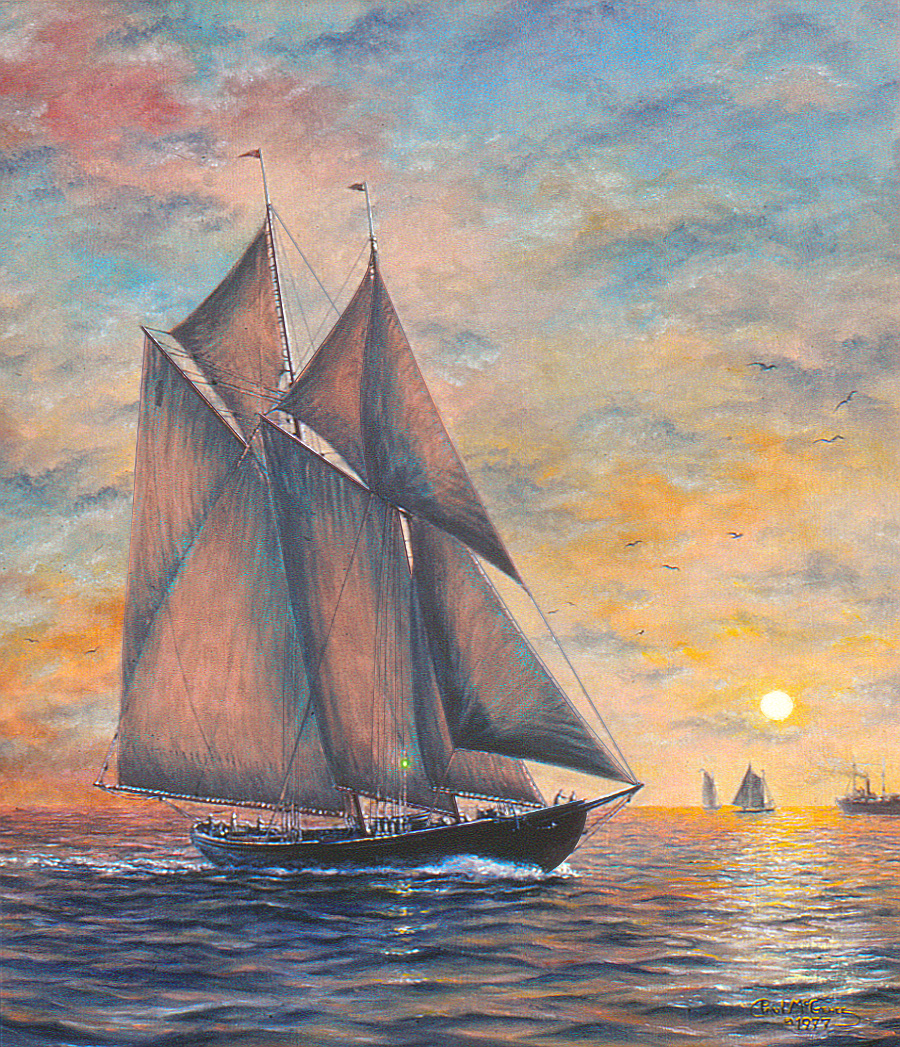|
"Red
Sails in the Sunset" by Paul McGehee. The famous schooner "Bluenose" in
the 1930's, heading for home against the backdrop of a setting sun.
Launched in 1921 in Lunenburg, Nova Scotia, the sleek 120' schooner
"Bluenose" was a commercial fishing vessel which also raced
competitively. She fished using the dory trawl method in the waters of
the Grand Banks of Newfoundland and the North Atlantic Ocean. In racing
meets she was a winner, besting vessels from the United States
including automobile manufacturing tycoon Henry Ford's self-named
schooner "Henry S. Ford", which he had built specifically to top
"Bluenose's" speed record. She regularly competed in the
Gloucester-type schooner races and won numerous titles into the late
1930's. By the early 1940's the world of commercial fishing was moving
away from sail-powered craft, and "Bluenose" was sold to the West
Indies Trading Company in 1942, and spent the war years hauling freight
between the various islands of the Caribbean. In 1946, while heavily
laden with a load of bananas, she struck a coral reef, broke apart and
sank off of Haiti, with no loss of life. The wreck of the "Bluenose"
has never been found, despite the efforts of many divers over the last
80 years. The schooner "Bluenose" was, and is, a Canadian icon, and has
been featured on several postage stamps dating back to 1929 in her
racing heyday. "Bluenose" is also portrayed on the reverse of the
Canadian 10 cent piece, and has been since 1937. A replica schooner,
the "Bluenose II" was launched in 1963 and to this day serves as a sail
training ship as well as the floating ambassador for Nova Scotia, with
visits to ports in Canada and the United States.
"Red Sails in the Sunset" is faithfully reproduced as an
archival-quality print from McGehee's original oil painting, in a limited edition of only 2,000 pieces each hand-signed by
the artist. Print image size 12 5/8" x 10 7/8".
|


